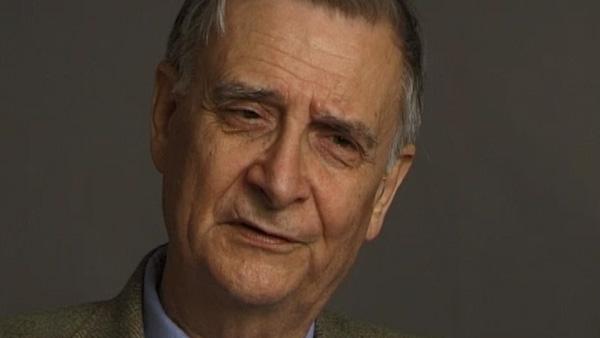NEXT STORY

The truly grand experience of my career
RELATED STORIES

NEXT STORY

The truly grand experience of my career
RELATED STORIES


|
Views | Duration | |
|---|---|---|---|
| 1. I never grew out of my bug period | 6 | 657 | 05:04 |
| 2. 'If you don't like mathematics, don't give up' | 2 | 839 | 02:59 |
| 3. A grand tour with Thomas Eisner | 1 | 296 | 05:23 |
| 4. Eating a big green katydid | 78 | 02:57 | |
| 5. Discovering ant colonies | 218 | 05:05 | |
| 6. Why I study ants | 362 | 01:09 | |
| 7. The Ants | 249 | 03:05 | |
| 8. Our book receives the Pulitzer Prize | 1 | 231 | 02:18 |
| 9. Fieldwork is exhilarating | 196 | 03:07 | |
| 10. The truly grand experience of my career | 207 | 06:09 |

The first time that Bert Hölldobler and I went into the field and did serious fieldwork together... before that time we'd mostly worked in the lab, was 1985. And we went down to the field station of the Organisation for Tropical Studies at La Selva in Costa Rica. And for every field station there is what I like to call a golden interval. And that is it comes after the station is established and after enough facilities have been built to make it comfortable. So you're not sleeping in a hammock and beating off mosquitoes and eating mush for, you know, your meal. It becomes reasonably comfortable facilities. But not so far along that it's lost its virginal character, which as you know, for whatever group, the butterflies haven't been well studied yet, the frogs are only partly known, the botany is being explored back home, people are beginning to come in. And we hit it at a time when almost nothing had been done on the ants. So we had about a week together. And it was splendid because this has an extremely rich fauna there, there are over 50 species in one genus that I specialise on, the genus Pheidole. 50. That's more species by a factor of about ten than you have in all the Eastern United States in that one locality. And then genus, after genus. You know, all kinds of wonderful ants. Most of which had never been studied. So he and I were like a couple of kids, you know, turned loose in the woods for the first time. Scrambling along the trail and shouting back and forth to one another. And I could say, 'Bert, here's a colony of Prionopelta'. And he would say, 'Quick, come here, I think I've got a Eurhopalothrix' and so on. And all of these things then we would then look at and we'd take back to the lab. Not a lab exactly, it was sort of just a little work station in one of the cabins. And we had the instruments to do simple experiments on division of labour, on pheromones, on basic behaviour, on what they ate and so on. And when we came back with our data and our specimens and so on we quickly proceeded to publish five refereed papers, and they were good papers too. They were very original and in almost each case the first observations of a real scientific nature on an entire group of ants that, you know, had never before been studied. So that's a kind of rich experience that one can have. If you take a group that hasn't been exhaustively studied, and that's almost every group in the world with the possible exception maybe of birds, and you know where to go and you hit... do the field work just right, it's an exhilarating experience.
EO Wilson (1929-2021) was an American biologist, researcher (sociobiology, biodiversity), theorist (consilience, biophilia), naturalist (conservationist) and author (two Pulitzer Prizes). His biological specialty was myrmecology, the study of ants.
Title: Fieldwork is exhilarating
Listeners: Christopher Sykes
Christopher Sykes is a London-based television producer and director who has made a number of documentary films for BBC TV, Channel 4 and PBS.
Tags: Organization for Tropical Studies, La Selva, Costa Rica, Prionopelta, Pheidole, Eurhopalothrix, Bert Hölldobler
Duration: 3 minutes, 8 seconds
Date story recorded: 2000
Date story went live: 22 May 2018